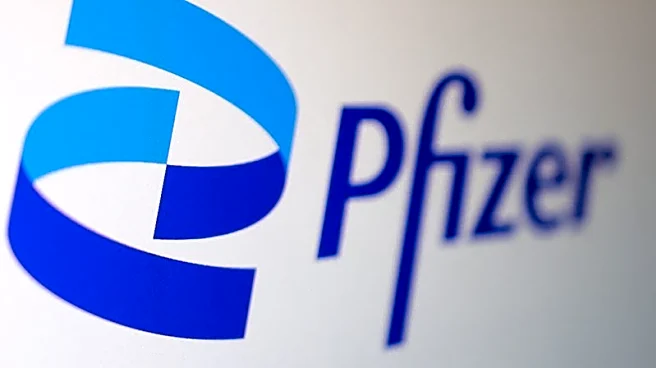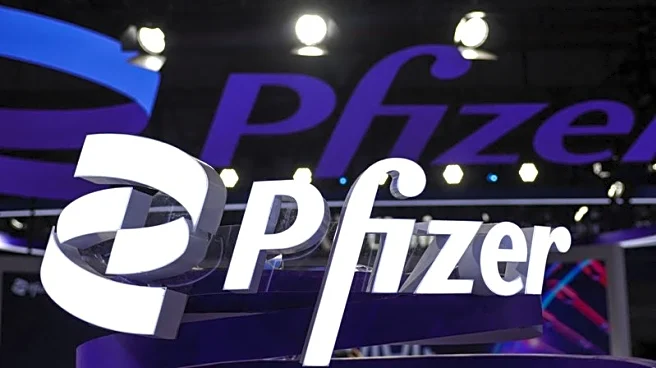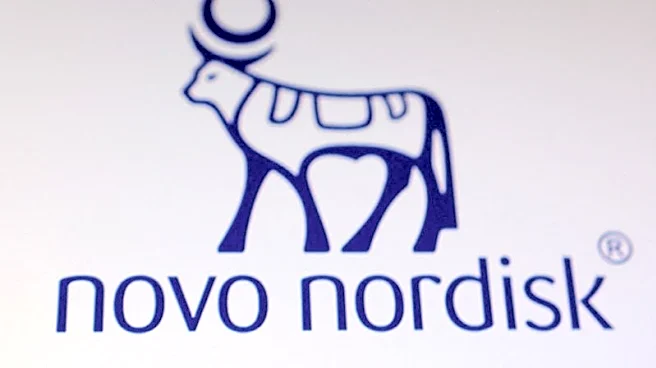What's Happening?
Pfizer has sold its remaining shares in BioNTech through an overnight block trade, according to Bloomberg reports. The sale involved 4.55 million American Depositary Receipts (ADRs) marketed at a price
range of $108 to $111.70 per ADR. This unregistered offering was executed at a discount of up to 3.3% compared to the closing price on Wednesday. The transaction marks Pfizer's complete divestment from BioNTech, a company it partnered with to develop the COVID-19 vaccine. The sale is significant as it reflects Pfizer's strategic financial decisions following the successful collaboration with BioNTech during the pandemic.
Why It's Important?
The sale of Pfizer's remaining shares in BioNTech is a notable event in the pharmaceutical industry, as it may influence BioNTech's stock value and investor sentiment. Pfizer's decision to divest could be seen as a move to reallocate resources or focus on other strategic initiatives. This transaction might affect BioNTech's market perception, given the historical significance of their partnership in developing a widely used COVID-19 vaccine. Investors and stakeholders in the pharmaceutical sector will be closely monitoring the impact of this sale on BioNTech's stock performance and future collaborations.
What's Next?
Following Pfizer's divestment, BioNTech may experience fluctuations in its stock price as the market reacts to the news. Analysts and investors will likely assess the implications of Pfizer's exit on BioNTech's future growth and strategic direction. BioNTech may seek new partnerships or investments to sustain its momentum in vaccine development and other medical innovations. Additionally, Pfizer's reallocation of resources could lead to new ventures or investments in emerging areas within the pharmaceutical industry.
Beyond the Headlines
This development highlights the dynamic nature of partnerships in the pharmaceutical industry, where strategic decisions can significantly impact company trajectories. The sale underscores the importance of adaptability and resource management in maintaining competitive advantage. It also raises questions about the long-term sustainability of collaborations formed during the pandemic and how companies navigate post-pandemic market conditions.












